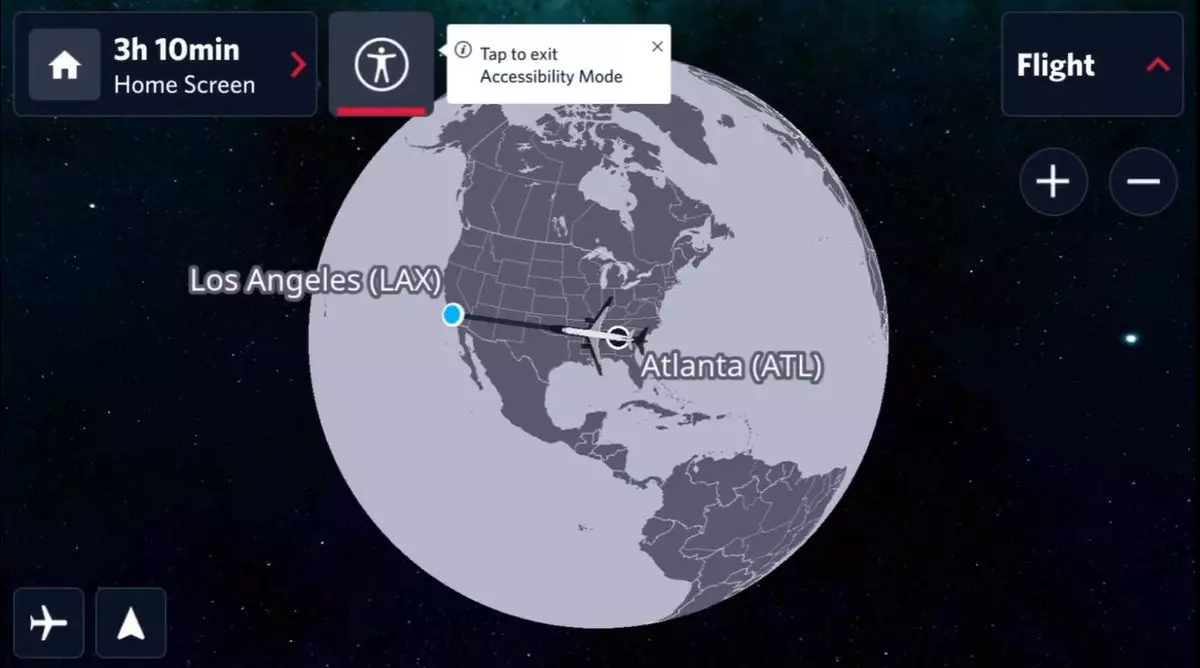In a pioneering move, Delta Air Lines has launched an accessible flight map intended to enhance the flying experience for passengers with visual impairments. This new feature marks a significant stride toward inclusivity in the airline industry, aiming to empower a demographic that often faces barriers during travel. According to Ekrem Dimbiloglu, Delta’s managing director of customer experience, the initiative will be available on 171 aircraft initially, with plans to expand this capability to over 600 planes ahead of the holiday season. This rapid rollout indicates a serious commitment to accessibility, which is crucial in an industry that often lags in accommodating the needs of all customers.
Accessibility in air travel is more than a compliance issue; it is a standard of service that respects the dignity and autonomy of all passengers. Dimbiloglu noted that nearly half of Delta’s customers utilize the flight map on their seatback screens at some point during their flights. Furthermore, 20% of travelers rely solely on this feature for in-flight engagement. The introduction of a map tailored for those with visual impairments illustrates that Delta is not merely paying lip service to accessibility; they are actively integrating these capabilities into their service offerings.
The accessible flight map simplifies the user experience by streamlining information. With larger fonts, high-contrast colors, and simplified geographical details, the map is designed to be easily understood. A planned voice narration feature—anticipated to launch next year—will further enhance usability, offering an auditory guide to passengers navigating their flight. This move is emblematic of a broader trend in the airline industry that aims to foster inclusivity wherever possible.
Delta’s collaboration with FlightPath3D, the developer behind the accessible map, further demonstrates the power of partnership in advancing innovation. After presenting a prototype earlier this year, adjustments were made based on feedback from Delta’s Advisory Board on Disability, showcasing a responsible and responsive approach to product development. This iterative process ensured that the final product effectively meets the needs of its intended audience.
The swiftness of this rollout—just 13 months since the inception of the project—is a remarkable achievement in an industry known for its slow adaptation to change. Both Delta and FlightPath3D express a desire for other airlines to adopt similar initiatives, indicating a movement toward a more unified approach to accessibility across the sector.
The impact of Delta’s efforts is poised to extend beyond its own fleet. By setting a precedent, the airline encourages its competitors to follow suit, ensuring that accessibility becomes an industry standard rather than an exception. The sentiment shared by both Dimbiloglu and Duncan Jackson, president of FlightPath3D, encapsulates a developing ethos in the airline industry: that doing the right thing is not just beneficial for customer relations but is essential for ethical business practices.
As Delta makes strides in integrating accessible features into its services, it serves as a model for how the aviation industry can evolve to meet the needs of all travelers. With about 400 million users engaging with similar technologies, the potential for widespread implementation of accessible tools is enormous. Delta’s initiative is not merely a triumph in technological innovation; it is a heartfelt commitment to ensuring that air travel is genuinely accessible to everyone.


Leave a Reply